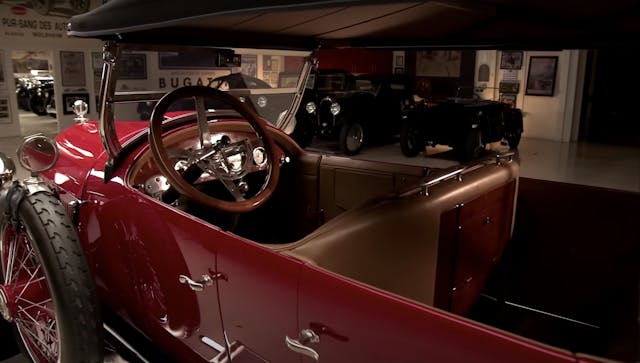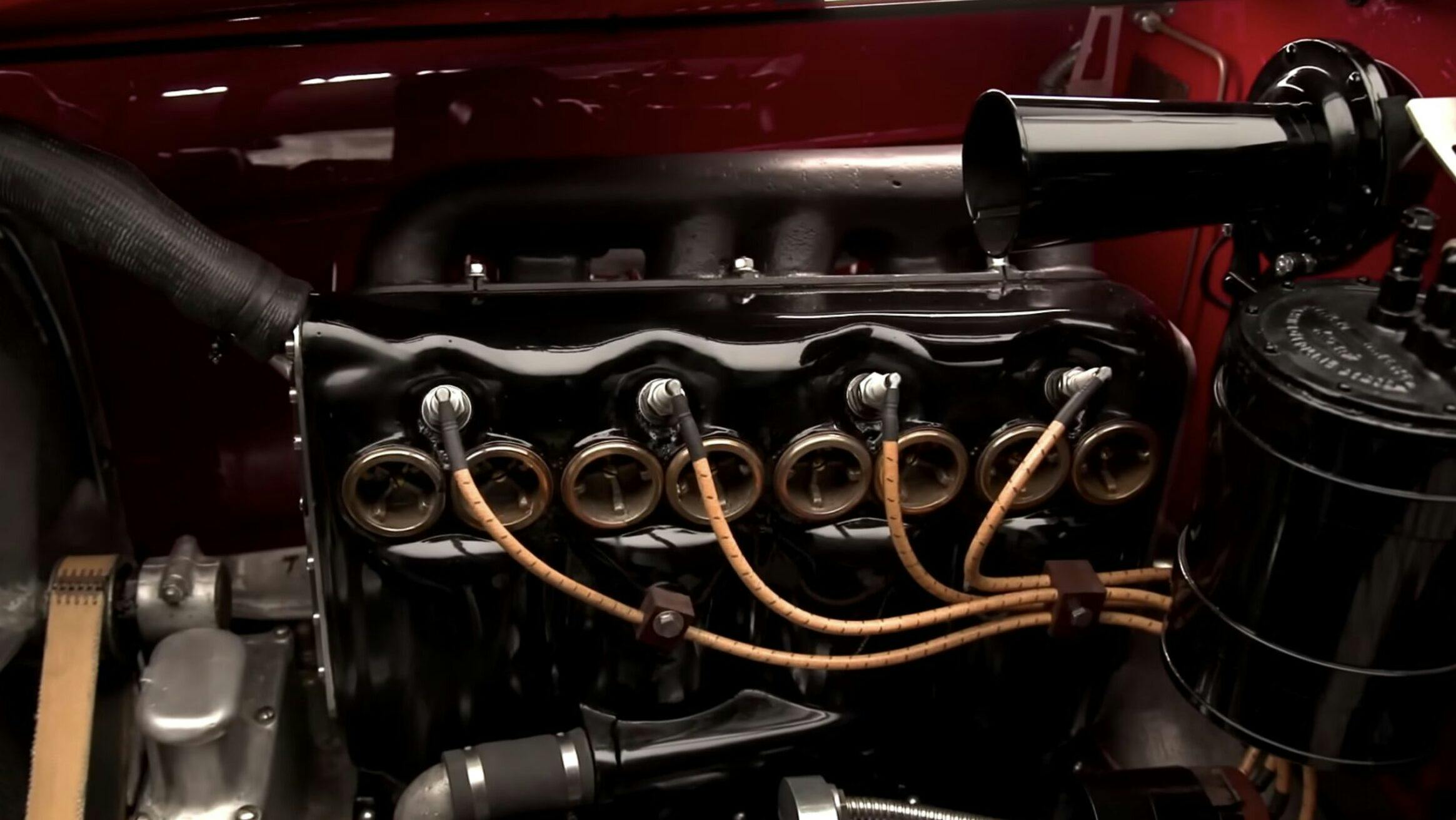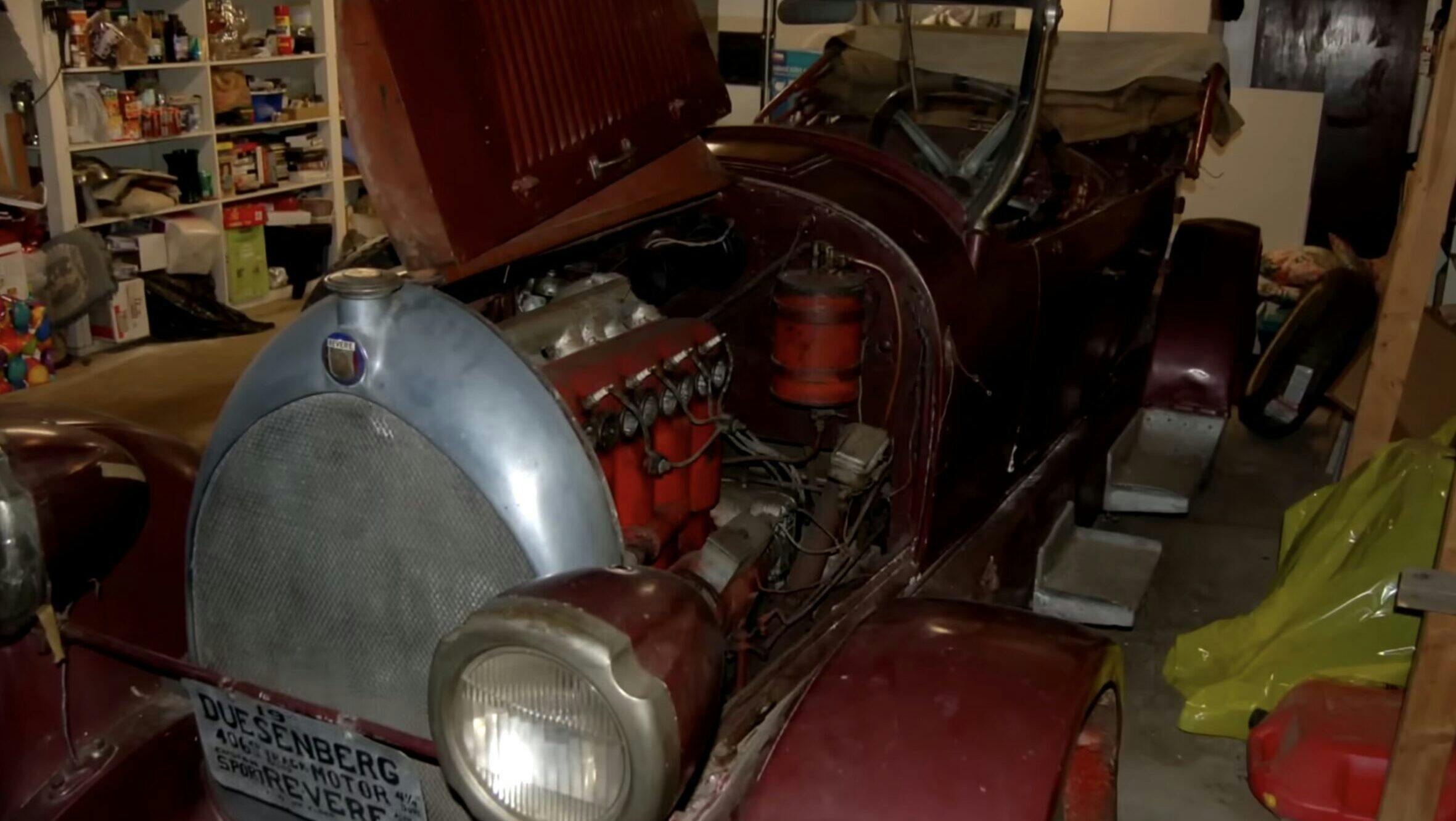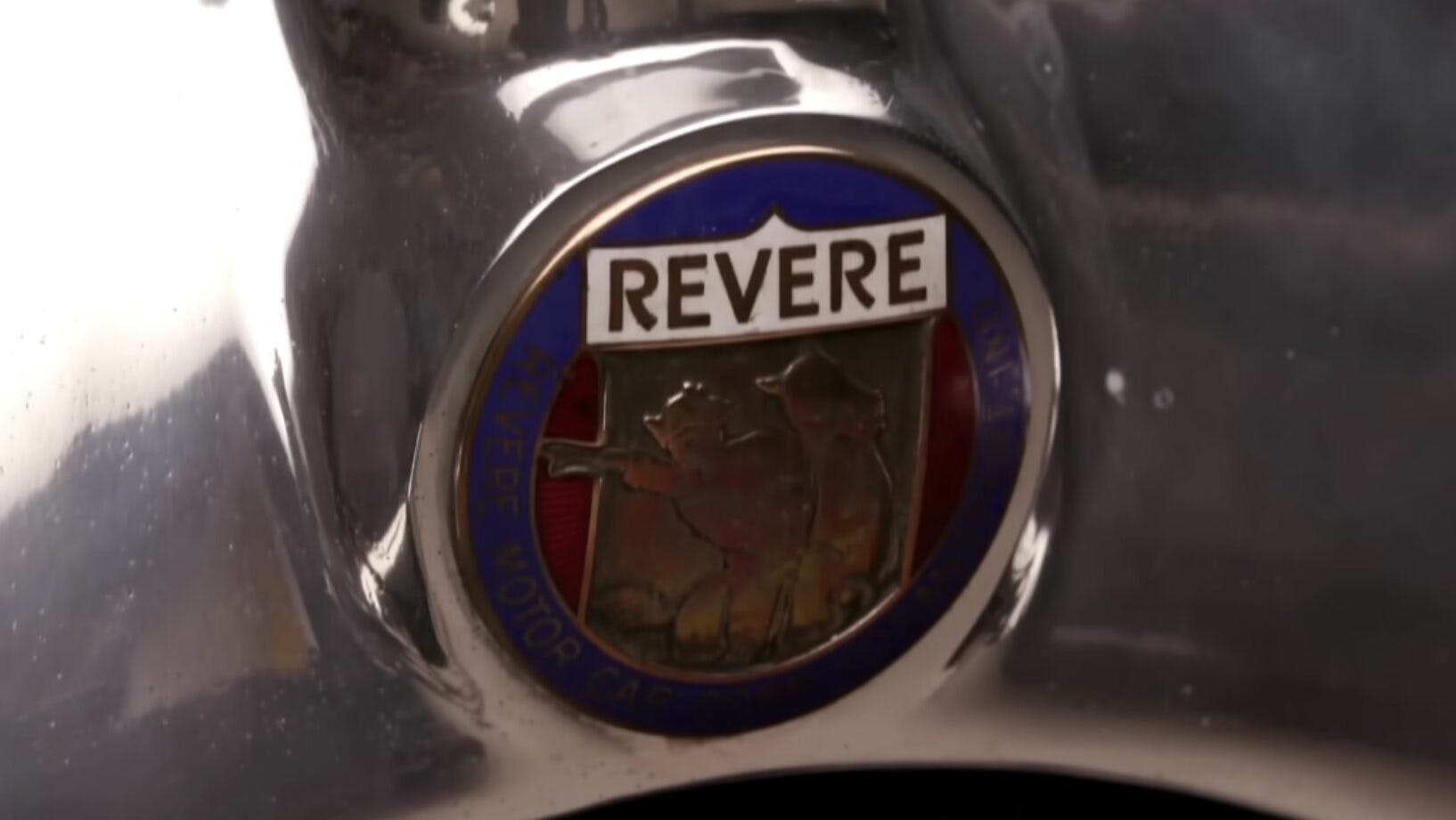The Rochester-Duesenberg ReVere, explained
It’s always busy around the garage. I like to restore a car to 100-point concours level if I can, drive it down to about 15 points, and then re-restore it. So the shop always has cars and motorcycles being torn apart or put back together. We recently finished restoring a 1920 Rochester-Duesenberg ReVere, a car you may not be familiar with. To tell its story, we have to go back a bit.
After Fred and Augie Duesenberg were involved with Mason and Maytag, they left to start their own engine company in 1913, designing what would become known as their “walking-beam” four-cylinder engine. It had overhead valves, but the valves were horizontal instead of vertical. And instead of pushrods, the engine had very long rocker arms—the so-called walking beams—that extended all the way from the camshaft in the block up to the valve stems at the top. The valves opened to a small chamber above the main combustion chamber that included the spark plug, which meant the plug lit a rich mixture that burned downward into a leaner mixture—what engineers today would call a stratified charge. It made more power and used less fuel while avoiding some of the heat and lubrication problems that dogged early overhead-valve engines.
It became the most successful racing engine of the teens, favored by early board-track racers like Eddie Rickenbacker. It was basically a cheap way of getting overhead-valve efficiency without overhead cams, which were still expensive to manufacture. Even so, the brothers weren’t making any money from it. World War I was a profitable diversion, during which they built aircraft engines. Afterward, the Duesenbergs wanted to get into building larger eight-cylinder engines, but their New York investors wanted to make money, so they forced the sale of the rights to the walking-beam four to Rochester Motor Company, which sold versions of the engine to Biddie, Roamer, ReVere, and others. There were at least 350 automakers in 1917, so it was sort of the same way you buy a Dell computer, which is a collection of components from other companies.


ReVere was named after the Revolutionary War hero, the “one if by land, two if by sea” guy, and was managed by a swindler named Newton Van Zandt. He came from a piano company and knew nothing about cars, but he knew how to separate people from their money. The whole thing went under in a stock scam, and Van Zandt absconded with a bunch of cash, later surfacing in New Jersey trying to pass off a lightly disguised ReVere as a brand-new design of his own making. He was found dead in his New York hotel room in 1921. The papers said it was a heart attack, but who knows?
Though they didn’t make many, the ReVere was actually a pretty good car. The brains behind it were Adolph Monsen, a talented engineer and perfectionist who had previously made cars under his own name in Chicago, and two racing drivers, the most famous of whom was Gil Anderson. He was a Norwegian immigrant who drove for Stutz and raced in the first six Indianapolis 500s, finishing third in 1915.

Built in Logansport, Indiana, north of Indianapolis, the ReVere had that Duesenberg racing engine, a Brown-Lipe four-speed, and a lot of aluminum in the body. Before he ran off, Van Zandt hired Erwin “Cannonball” Baker, of Cannonball Run fame, to drive a ReVere coast to coast and everywhere in between, covering more than 16,000 miles. “America’s Incomparable Car” was the slogan, and one of the first customers was Alfonso XIII, the king of Spain. The car represents classic boutique manufacturing of the day. Get the fastest engine, the best transmission, a well-designed chassis, high-end Buffalo wire wheels, and build a car.
I got mine 25 years ago, and I’ve read that there aren’t more than five or six Rochester-Duesenberg engines left. To restore it, we had to make the pistons, the rods—pretty much everything. And my crew did it beautifully. I’m looking forward to driving some points off it.
Check out the Hagerty Media homepage so you don’t miss a single story, or better yet, bookmark it.









I work on large slow speed Diesel engines on merchant ships.
A few years ago we were working on a variable injection timing assembly on the fuel pump, which had an extra rack arm to move the pump body to improve efficiency, economy and power all at the same time. I asked the Tech Rep what new age genius dreamed this up the answer of course was the Germans developed this before WW2 but the drawings were forgotten until somebody dug through some old books the point being that sometimes old ideas are scrapped due to a lack of machining ability but are now possible. The ideas of the teens and twenties were amazing and perhaps some of the best are yet to be developed.
Here is what I found about the manufacturer;
In the early 1920s a Rochester manufacturer supplied engines for an exotic luxury automobile known as the Richelieu–assembled in, of all places, Asbury Park, New Jersey. The president of the Richelieu company was an officer of Rochester Motors Corporation, a gasoline engine maker earlier known as the F.A. Brownell Motor Company and now (1921) controlled by the Symington interests. If this is not confusing enough, the engine supplied to the assembly plant in Asbury Park was called the Rochester Duesenberg. Following
World War I the Duesenberg brothers abandoned their “Model G” racjng engine, selling the rights to manufacture it to Rochester Motors. This four-cylinder, 85 horsepower engine was apparently the major raison d etrefor the Richelieu. However, the buying public 24 was surfeited with expensive high-powered makes at the time and in early 1923 Richelieu filed for bankruptcy. A manufacturing venture of the late 1930s shared in that era’s enthusiastic schemes for small, lightweight, inexpensive cars–cars wedded in design elements if not in practical terms to the airplane. Nationally, the best known example of the type was the Dymaxion car of Buckminster Fuller. Between 1932 and 1935 three Dymaxion prototypes were sold. Fuller, a visionary designer rather than a practical industrialist, could not secure the means for mass
production.
https://www.libraryweb.org/~rochhist/v43_1981/v43i2-3.pdf
The Richelieu was the ReVere. Most cars and parts were shipped by rail from the ReVere plant in Indiana to New Jersey by VanZandt who was the president of the ReVere Motor Car Corp and were passed off as Richelieu’s. with VanZandt as president of the company
Very interesting car. Love that interior and that motor.
Jay, great story! You are an excellent writer as well as a great asset to our hobby.
Awesome story. I love the fact that you are able to enjoy the cars and rebuild them. Thank you Jay.
This is what always fascinated me.the ideas people came up with in the automotive world. my father always encouraged me to tear things apart and put them back together,see how they work,could I do it better.love the history Thank You
In Logansport, Indiana, the Cass County Historical Society representing the community at large, is the caretaker of one of the remaining ReVere automobiles. Same color and model as Jay Leno’s model.
It has been featured at the Indianapolis 500 celebration in recent years and has been on display at the Auburn Cord Duesenberg museum in Auburn Indiana. It is a privilege to have this piece of history in its birthplace!
Fantastic looking car & great story. Thanks Jay for restoring it for posterity.
As a guy who likes to build as well as drive I can’t say how much I appreciate being able to build it as a 100 point car and “driving it down to a 15 point car”. If I had your resources I would do similarly. Building is a lot of fun, but what fun is it to let them just sit? 😀